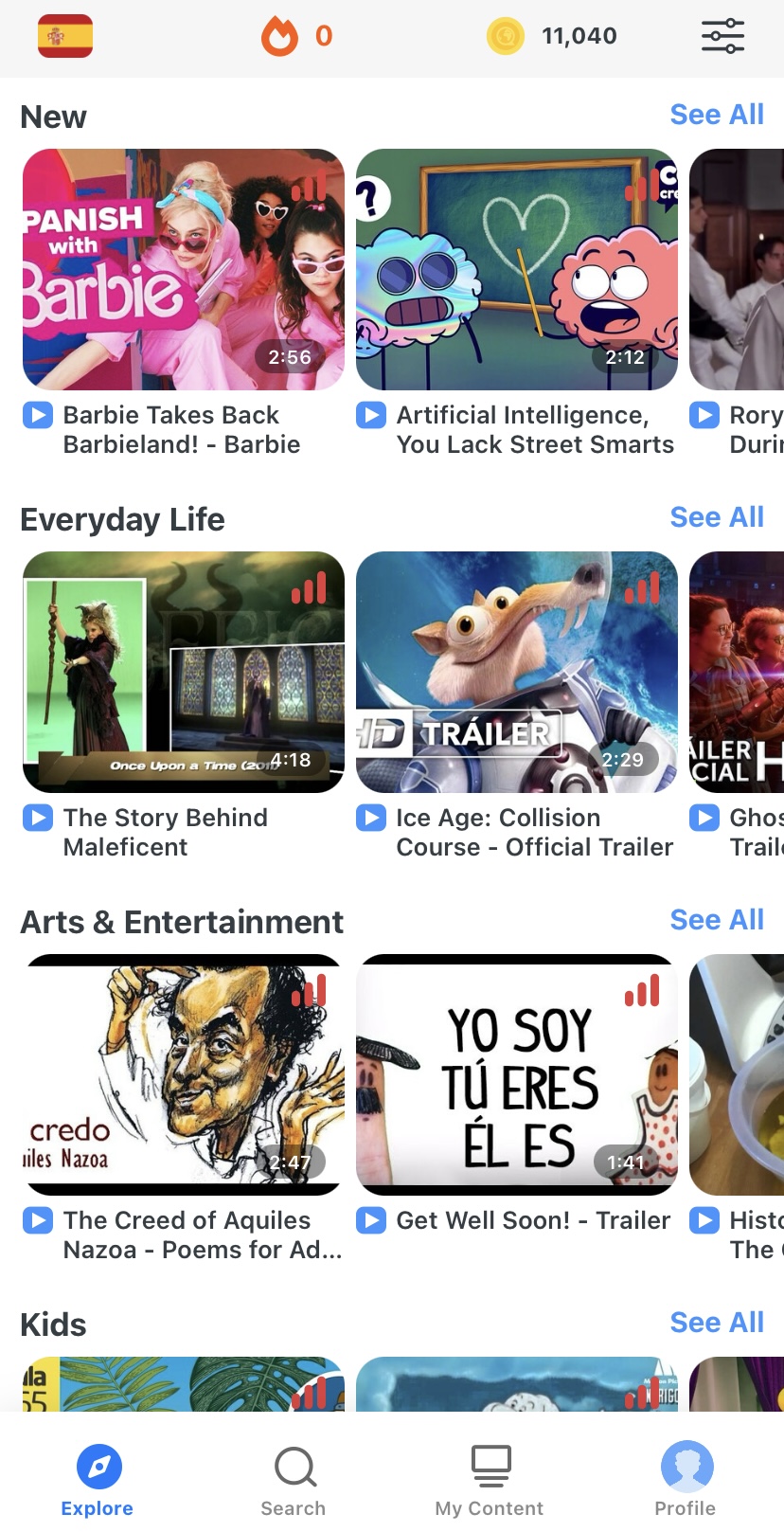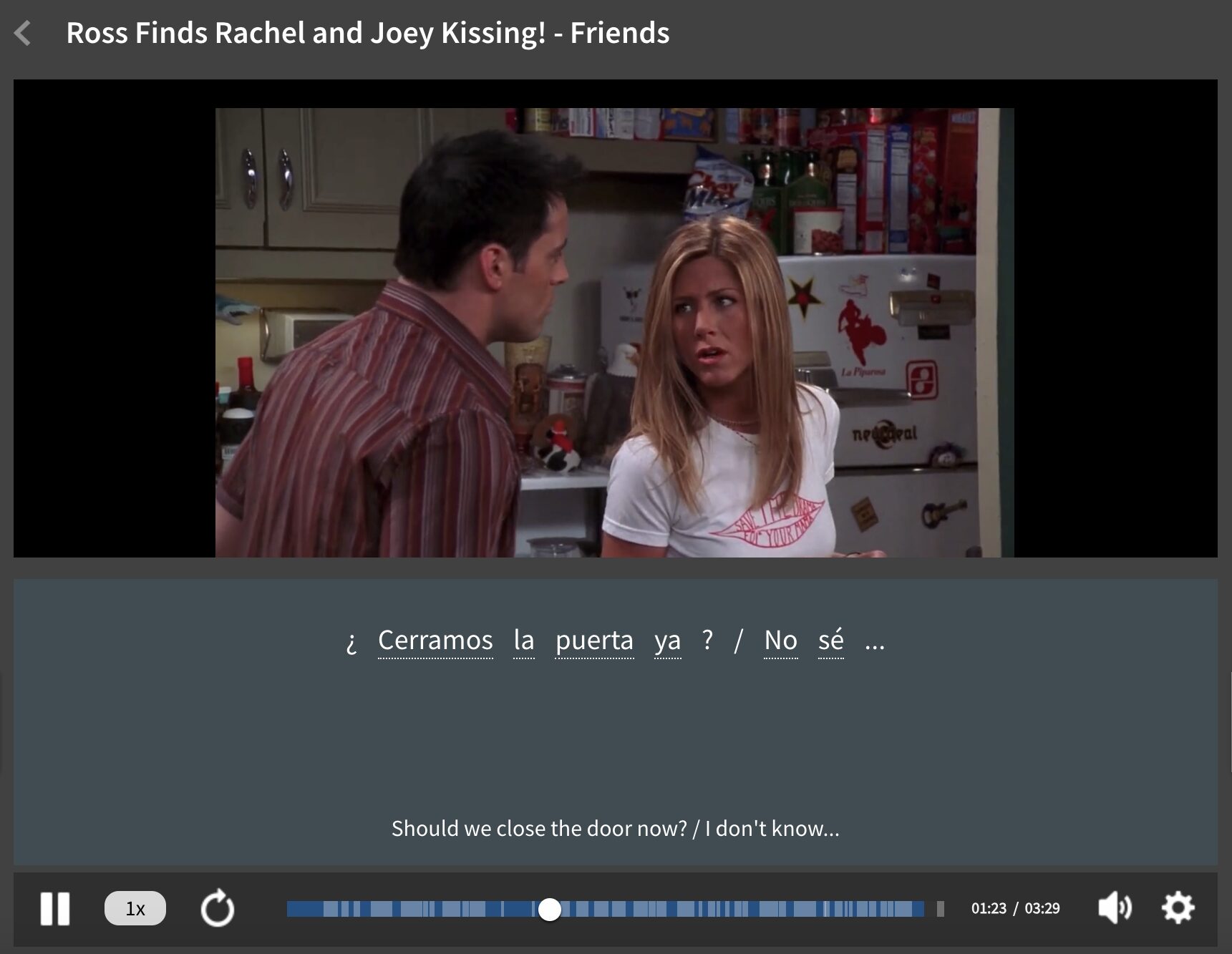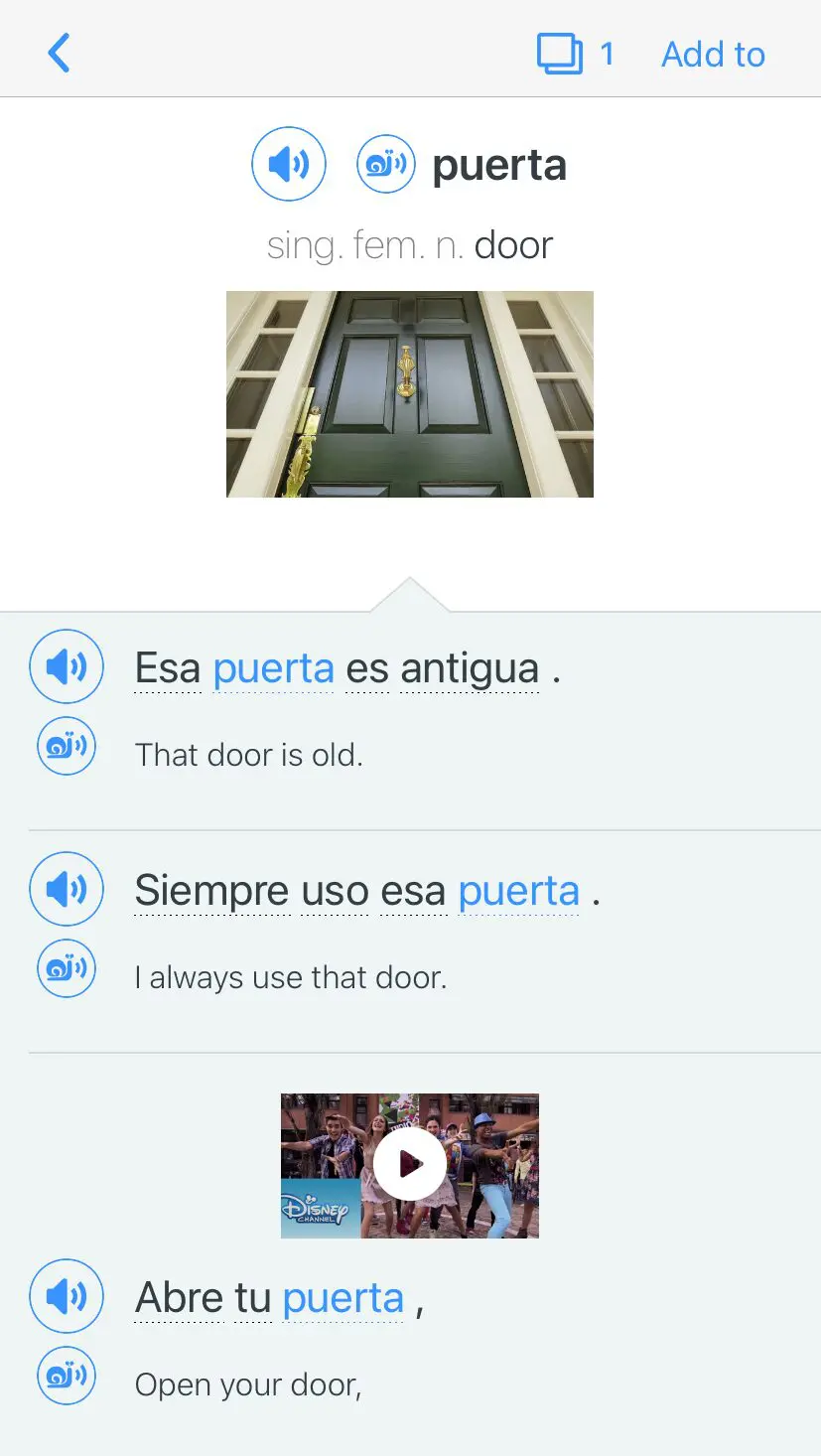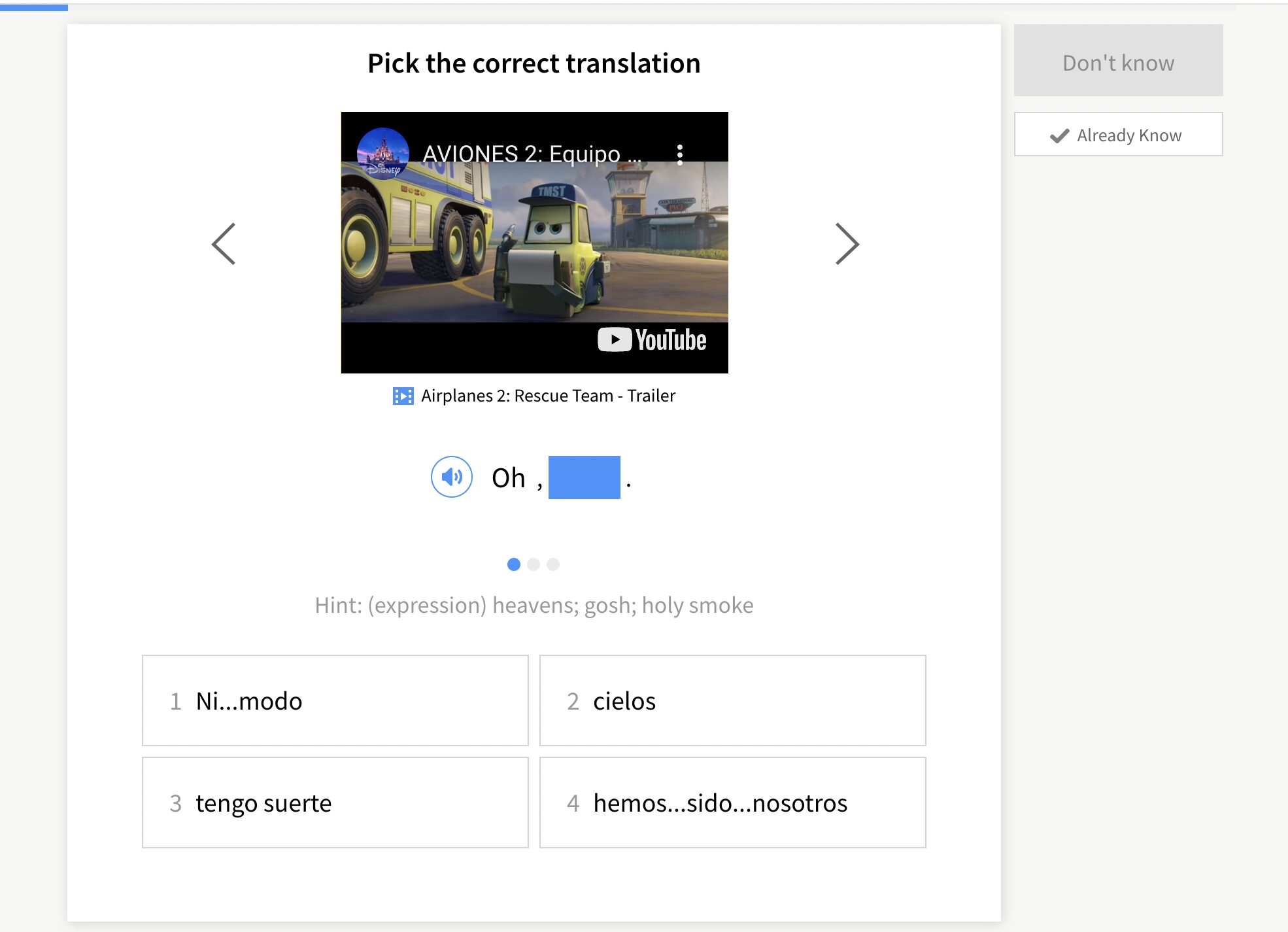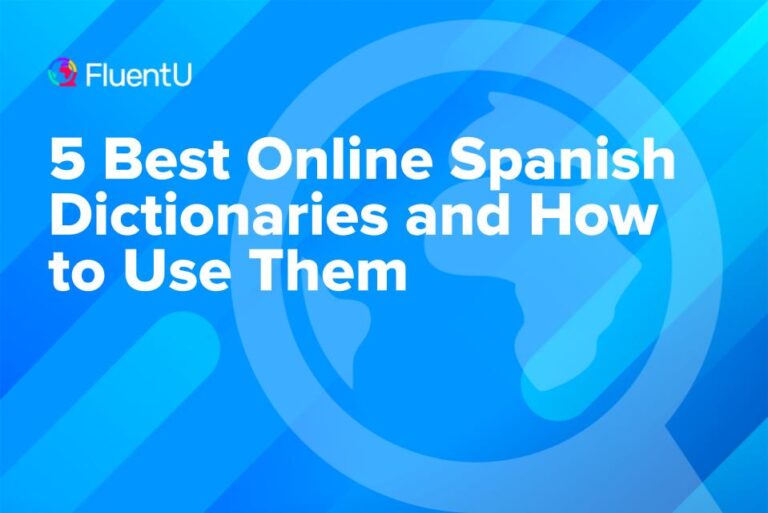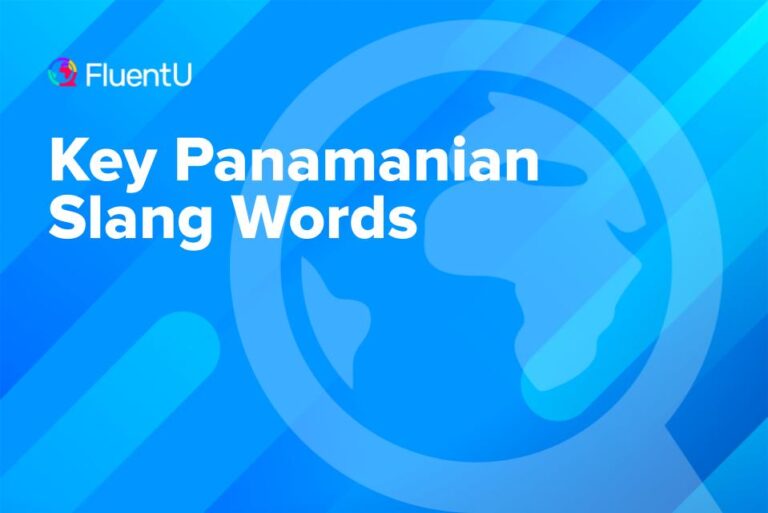18 Spanish Mnemonics for Grammar and Vocabulary
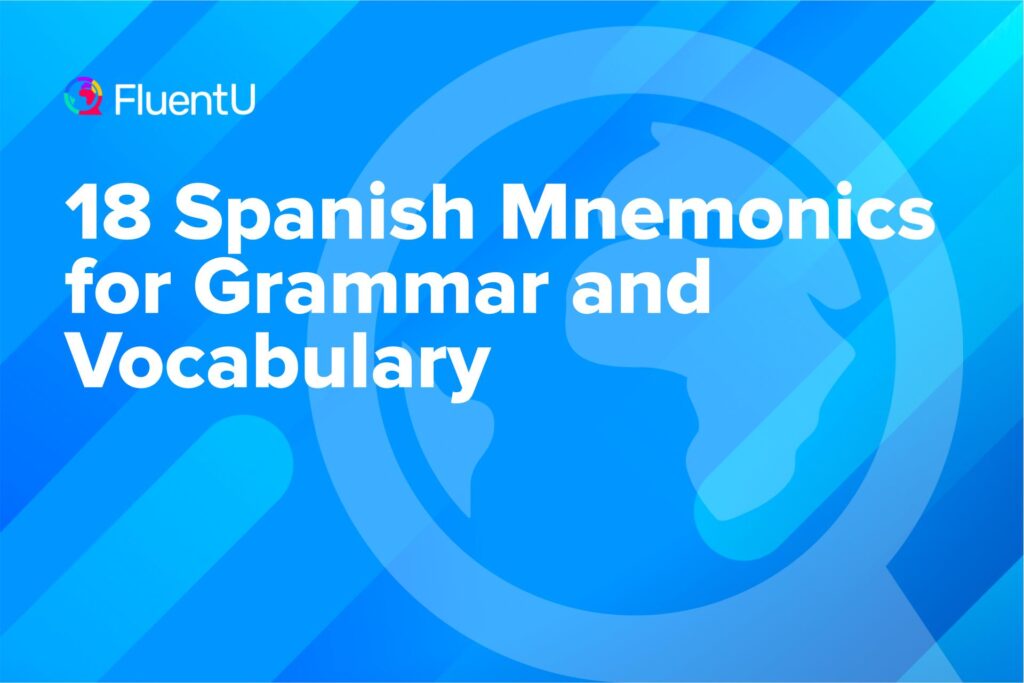
Mnemonics are things you create in your mind to help you remember things because they’re somehow associated with them—such as acronyms, funny stories, images, etc. And there are several that can help you remember Spanish vocabulary and difficult grammar rules, which we’ll go over in this guide.
Download: This blog post is available as a convenient and portable PDF that you can take anywhere. Click here to get a copy. (Download)
Most Useful Spanish Mnemonics
“Vin Diesel has ten weapons”
This mnemonic is used to help you remember the irregular Spanish imperative verbs (also known as Spanish commands). They are:
- Venir → Ven (come)
- Decir → Di (say)
- Salir → Sal (leave, go out)
- Hacer → Haz (do)
- Tener → Ten (have)
- Ir → Ve (go)
- Poner → Pon (put)
- Ser → Sé (be)
When you say the conjugation verbs right after each other, it sounds like “Vin Diesel has ten weapons.” Ven Di Sal Haz Ten Ve Pon Sé.
WEIRDO
The acronym WEIRDO helps you remember when to use the subjunctive mood instead of the indicative mood. It stands for:
- Wishes
- Emotions
- Impersonal expressions
- Requests/Recommendations
- Doubt/Denial
- Ojalá
When your sentence falls under any of these categories, you know to use the subjunctive mood. For example:
Espero que vengas a la fiesta. (I hope you come to the party.)
Me alegro de que hayas dormido bien. (I’m glad you slept well.)
Es bueno que ella pueda aprender español en la escuela. (It’s good that she can learn Spanish at school.)
DISHES
DISHES is an acronym to help you remember which verbs are irregular in the subjunctive: Dar, Ir, Saber, Haber, Estar and Ser.
“This and these are the ones with the Ts”
This rhyme helps you differentiate between ese/esa (that) and este/esta (this). Este/esta means “this” and estos/estas means “these.” Whereas ese/esa means “that” and esos/esas means “those.”
So “this” (este/esta) and “these” (estos/estas) have “Ts,” but ese/esa (that) and esos/esas (those) do not.
RID
RID stands for Reflexive, Indirect and Direct. It’s the order that object pronouns follow in a sentence. For example:
Se la regalé. (I gave it to her)
Te me acercaste. (you approached me)
Se me olvidó. (I forgot.)
More Spanish Mnemonics for Vocabulary
- The word for “library.” The word biblioteca sounds a bit like discoteca (club). So to remember the Spanish for “library” you could think, “The discotheque for Bibles and other books is a biblioteca.“
- The word for “bread.” When I first started learning Spanish, I would remember the word for bread because I had already studied Japanese, and bread in Japanese is also pan. But another idea would be to think, “Only in Venezuela do they cook bread in a pan.”
- The word for “difficult.” A lot of people struggle to remember the accent in difícil, so why not combine that with a mnemonic that helps you remember what it means? “It’s difficult to remember the accent in the middle of difícil.”
- The word for “money.” This one is somewhat more well-known: “Actor Robert Dinero has a lot of money.”
- Days of the week. There are a range of sentence mnemonics out there for remembering the Spanish days of the week. A popular one is “Lucy Makes My Journeys Very Special Delights” to go from lunes (Monday) through domingo (Sunday). You can find more mnemonics for the days of the week here and here.
- How to say “I say.” This irregular conjugation of the verb decir—digo—can be remembered with this mnemonic: “Oh, I dig it, I say.”
- The word for “knife.” People often confuse the Spanish word for “knife” (cuchillo) with the word for spoon (cuchara). The Ls in cuchillo could be said to look a bit like knives.
- The word for “carry.” It’s easy to confuse the word for “carry” with the word for “crap,” or “screw up.” That little hard-to-pronounce R is what can guarantee that you say the word for carry (cargar) instead of the word for “crap,” cagar. Here’s my mnemonic: “You need to carry an extra R, or you’ll screw up and be in the s**t.”
- The word for “older.” Another word that can be confused with similar words, you can remember the meaning of mayor with this mnemonic: “The town mayor is older than me.”
- The word for “success.” As it’s easily confused with a completely different English word, remember what éxito means with this: “You have successfully exited Windows.”
- The word for “crash.” The Spanish word chocar refers to when cars crash, but it’s also useful when something is shocking. This mnemonic could help you: “Cars don’t choke each other, they crash or collide.”
- The word for “sleep.” Honestly, I think of a dormouse when I think of dormir. The little creature is cute, and you can imagine it sleeping. If that image mnemonic doesn’t work, you can also think, “Close the door before you sleep.”
- The word for “tomorrow.” Mañana is always fun since it means “tomorrow” and “morning.” Spanish speakers find nothing odd about saying mañana por la mañana to say tomorrow morning. To remember this word, you can use the mnemonic “a banana in the morning.”
How to Create Your Own Mnemonics
Oftentimes, just the process of creating your own mnemonic can be enough to get you to remember the information you’re trying to learn. But when it’s not, you still have the mnemonic itself to help you.
Here are some different ways to make your own mnemonics:
- Stories. Let’s say you want to remember the word otro for “other.” You make up a story about an otter who was asked out, but she chose the other otter. “Otter” sounds close enough to otro that it will jog your memory.
- Acronyms. It can be hard to come up with these, but they can be good for remembering lists like numbers or groups of words—the words for relatives, for example. Say you want to remember mamá, papá, abuelo, abuela. You could use the acronym MAAP and think about a map of a family.
- Sentences. Similar to acronyms, this is a technique for remembering lists. To remember the numbers uno, dos, tres, cuatro, your sentence could be “Under David’s trendy car.”
- Rhymes and songs. Children often learn the alphabet of their native language by singing it to a tune, and you can apply the same technique to groups of Spanish words, lists of irregular conjugations and other lists.
- Word and sound associations. This is one of the easiest types of mnemonics to create. You know how at school you were taught that a “stalactite” is the upside-down one because it hangs on tightly to the ceiling? You can apply this method to new Spanish words as well.
- Stressed syllables. Where you put the stress in Spanish words matters—it can go as far as communicating which tense you’re using. So Master of Memory recommends only remembering the stressed part of the word first, then the rest will naturally be easy to remember. For example, estar and para.
- Chunking. This is a mnemonic technique where you learn word phrases that you can later piece together. For example, with the sentence Me gusta mucho salir contigo, you would remember me gusta mucho (I really like) and salir contigo (going out with you) separately so you could use them each in other sentences.
How Mnemonics Can Help You Learn Spanish
Mnemonics help us with some of the more tedious aspects of language learning, or those words that just won’t stick. The days of the week become rhymes, or a confusing word becomes a tiny story that makes it memorable.
Mnemonics are just creative devices that help us retain information. They depend a lot on association with things we already know—something our brain is very good at, and good at doing quickly. With languages, visual people may imagine words as pictures, or verbal people may use rhymes to help them remember a list, like the months of the year.
I remember being hesitant to study languages in high school because I imagined copying lists of words over and over. But that’s the worst way to learn Spanish, and in reality, language learning can and should be a lot of fun.
Mnemonics is one fun method, and there’s also online games, Spanish songs you can listen to, movies and YouTube videos, jokes, slang and more.
So, get out there and engage in your own wild and creative learning. And most importantly, enjoy it.
Download: This blog post is available as a convenient and portable PDF that you can take anywhere. Click here to get a copy. (Download)
And One More Thing…
If you’re like me and prefer learning Spanish on your own time, from the comfort of your smart device, I’ve got something you’ll love.
With FluentU’s Chrome Extension, you can turn any YouTube or Netflix video with subtitles into an interactive language lesson. That means you can learn from real-world content, just as native speakers actually use it.
You can even import your favorite YouTube videos into your FluentU account. If you’re not sure where to start, check out our curated library of videos that are handpicked for beginners and intermediate learners, as you can see here:
FluentU brings native Spanish videos within reach. With interactive captions, you can tap on any word to see an image, definition, pronunciation, and useful examples.
You can even see other videos where the word is used in a different context. For example, if I tap on the word "puerta," this is what pops up:
Want to make sure you really remember what you've learned? We’ve got you covered. Practice and reinforce the vocab from each video with learn mode. Swipe to see more examples of the word you’re learning, and play mini-games with our dynamic flashcards.
The best part? FluentU tracks everything you’re learning and uses that to create a personalized experience just for you. You’ll get extra practice with tricky words and even be reminded when it’s time to review—so nothing slips through the cracks.
Start using the FluentU website on your computer or tablet or, better yet, download our app from the App Store or Google Play.
Click here to take advantage of our current sale! (Expires at the end of this month.)
